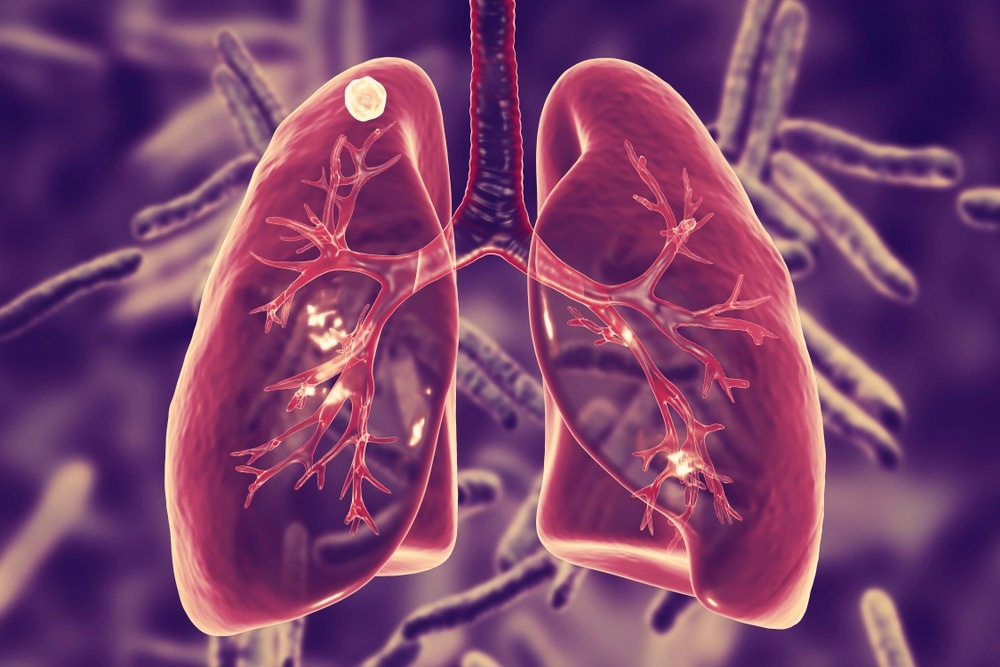 By Neha MathurReviewed by Danielle Ellis, B.Sc.Feb 9 2023
By Neha MathurReviewed by Danielle Ellis, B.Sc.Feb 9 2023In a recent study published in the Radiology, researchers performed a single-center, open-label randomized controlled trial (RCT) to investigate whether commercial artificial intelligence (AI)-debased computer-aided design (CAD) system could improve the detection rate of actionable lung nodules on chest radiographs.
 Study: AI Improves Nodule Detection on Chest Radiographs in a Health Screening Population: A Randomized Controlled Trial. Image Credit: Kateryna Kon/Shutterstock
Study: AI Improves Nodule Detection on Chest Radiographs in a Health Screening Population: A Randomized Controlled Trial. Image Credit: Kateryna Kon/Shutterstock
Actionable nodules are Lung Imaging Reporting and Data System (Lung-RADS), Category 4 nodules. These might be solid nodules larger than eight mm or subsolid nodules with a solid area spanning over six mm.
Studies have not prospectively explored the impact of AI–based CAD software in real-world settings.
About the study
In the present study, researchers recruited individuals who underwent chest radiography between June 2020 and December 2021 at a health clinic of Seoul National University Hospital. They used a self-reported health questionnaire to gather baseline characteristics of all the participants, including age, gender, comorbidities (e.g., diabetes), history of lung cancer, surgery, tuberculosis, family history of lung cancer, and other malignancies.
First, the researchers acquired all chest radiographs in the posteroanterior projection with no lateral views. The image was subsequently allocated a unique five-digit random number by the AI-picture archiving and communication system (PACS) server. Next, the PACS server randomized the participants in a 1:1 ratio into either the AI or non-AI group.
A highly experienced radiologist interpreted the radiograph of each participant aided by AI-based CAD in the AI group. For those in the non-AI group, the radiologists interpreted chest radiographs without AI-based CAD results. The radiologists used an AI-PACS-implemented structured reporting system to interpret chest radiographs from both groups.
For participants in the AI group, the AI-PACS server overlaid the results of AI-based CAD onto the chest radiograph and sent them back to the conventional PACS server. On the contrary, it blinded the AI-based CAD results in the non-AI group. Later, clinicians at the health center viewed these images and radiologic reports for clinical practice. This system also analyzed frontal chest radiographs to assess thoracic abnormalities, i.e., pneumonia, pneumothorax, and a pulmonary nodule, on a percentage scale of zero to 100% and depicted them as heat maps.
The primary outcome was the detection rate of actionable lung nodules confirmed on CT scans obtained within three months after chest radiography. The detection rate was the number of true-positive chest radiographs divided by the cumulative chest radiographs. Additionally, the team assessed a few secondary outcomes, such as the false-referral and positive-report rates. The team used univariable logistic regression analyses to compare clinical outcomes between the AI and non-AI groups.
Results
The study had 10,476 adult participants, with 5,238 participants in both AI and non-AI groups. They all underwent at least one chest radiographic examination. The AI-based CAD system met the primary outcome and enhanced the detection rate of actionable lung nodules on chest radiographs, with an odds ratio (OR) of 2.4. Moreover, the researchers noted no substantial variations in the false-referral rate between AI and non-AI groups (45.9% vs. 56%). Likewise, the positive-report rate for the two groups was comparable (2.3% and 1.9%).
Of 10,476 study participants, 30 (0.28%) underwent pathologic evaluation for lung nodules, 22 via surgical resection, and eight via biopsy. Compared to the non-AI group, the detection rate for malignant lung nodules was higher in the AI group.
This trial evaluated the real effect of AI-based CAD in real-world settings. It followed a pragmatic approach, including all 10,476 adult participants because the institutional review board (IRB) waived informed consent from the participants. Note that this system had received Food and Drug Safety approval and was also robustly validated in several studies. In addition, it was easy to integrate into a viable PACS, allowing its usage in day-to-day clinical practice.
The subgroup analyses revealed that though older age and a history of lung cancer or tuberculosis were associated with positive reports; however, those factors did not affect the efficacy of the AI-based CAD system.
It could work even for people with diseased lungs. Moreover, the younger age and male gender could benefit more from AI-based CAD usage in larger samples. Furthermore, this AI-aided CAD system had a similar impact on all radiologists. Thus, it could help them regardless of their expertise in reporting lung nodules.
Conclusions
The current RCT encompassing 10,486 participants, remarkably evaluated the impact of AI-based CAD in real-world clinical practice. It improved the detection of actionable lung nodules on chest radiographs substantially. Since it yielded a similar false-referral rate, this system might aid lung cancer diagnosis while preventing radiation hazards. Future trials should investigate the impact of this system on increased lung cancer diagnoses or participants’ prognoses.
Journal reference:
- AI Improves Nodule Detection on Chest Radiographs in a Health Screening Population: A Randomized Controlled Trial, Ju Gang Nam, Eui Jin Hwang, Jayoun Kim, Nanhee Park, Eun Hee Lee, Hyun Jin Kim, Miyeon Nam, Jong Hyuk Lee, Chang Min Park, Jin Mo Goo, Radiology 2023, doi: https://doi.org/10.1148/radiol.221894
https://pubs.rsna.org/doi/10.1148/radiol.221894